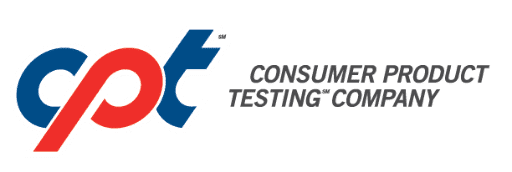As its name suggests, Preservative Efficacy Testing (PET) is a procedure for determining the effectiveness of a product’s preservative system after controlled quantities of test microorganisms have been introduced. Antimicrobial Preservative Efficacy testing is essential to cosmetic/personal care and drug manufacturers for identifying optimal preservative combination(s) and concentrations(s) of preservatives for microbial growth inhibition while minimizing the undesirable effects of preservative levels that are unnecessarily high. Moreover, preservative formulations must meet regulatory standards for the protection of human health. Two of the most commonly used preservative effectiveness tests are USP <51> and PCPC.
USP <51> Antimicrobial Effectiveness Test
USP <51> Antimicrobial Effectiveness Testing involves inoculating 5 individual test organisms (Staphylococcus aureus ATCC 6538, Pseudomonas aeruginosa ATCC 9027, Escherichia coli ATCC 8739, Candida albicans ATCC 10231 and Aspergillus brasiliensis ATCC 16404) into separate 20 gram aliquots of the test sample. The starting level for each organism is between 100,000 to 1,000,000 organisms. The samples are then incubated at 20-25oC for 28 days. Aliquots are removed from these samples at 7, 14 and 28 days (depending on the product category) to determine recoveries of any viable test organisms that are remaining so as to determine preservative effectiveness.
There are 4 Categories listed in USP <51> and the acceptance criteria for tested organisms for each category.
USP Compendia Product Categories
| Category | Product Description |
|---|---|
| 1 | Injections; other parenterals including emulsions, otic products, sterile nasal products, and ophthalmic products made with aqueous bases or vehicles |
| 2 | Topically used products made with aqueous bases or vehicles; nonsterile nasal products and emulsions, including those applied to mucous membranes |
| 3 | Oral products other than antacids, made with aqueous bases or vehicles |
| 4 | Antacids made with an aqueous base |
USP Acceptance Criteria for Tested Microorganisms
| Category | Bacteria | Yeast & Molds |
|---|---|---|
| 1 | Not less than 1.0 log reduction from the initial calculated count at 7 days, not less than 3.0 log reduction from the initial count at 14 days, and no increase from the 14 days’ count at 28 days. | No increase from the initial calculated count at 7, 14 and 28 days |
| 2 | Not less than 2.0 log reduction from the initial count at 14 days, and no increase from the 14 days’ count at 28 days | No increase from the initial calculated count at 14 and 28 days |
| 3 | Not less than 1.0 log reduction from the initial count at 14 days, and no increase from the 14 days’ count at 28 days | No increase from the initial calculated count at 14 and 28 days |
| 4 | No increase from the initial calculated count at 14 and 28 days | |
“No increase” in counts is defined as NMT 0.5 log10 unit more than the value to which it is compared.
Other microorganisms may be added to those included within the standard panel. This may include microorganisms which have been isolated by an environmental monitoring program from a location within the manufacturing facility, or from a product found to contain the microorganism of concern. Microorganisms isolated in this manner are often more resistant to the micro-biocidal effects of the preservative ingredient. One example of a problematic organism for aqueous-based formulations is Burkholderia cepacia which many are including in their testing by USP <51>.
PCPC Preservative Efficacy Test
PCPC Preservative Efficacy Testing involves using either a pure culture inoculation technique as indicated above for USP <51> or a mixed culture inoculation technique (CPT uses the mixed culture method unless the client indicates differently). The mixed culture technique of inoculation involves making a pool of the bacterial organisms (Staphylococcus aureus ATCC 6538, Pseudomonas aeruginosa ATCC 9027, Escherichia coli ATCC 8739), and pool of the fungal organisms (Candida albicans ATCC 10231 and Aspergillus brasiliensis ATCC). The bacterial and fungal pools are inoculated into separate 20 gram aliquots of the test sample. The starting level for each pool is between 100,000 to 1,000,000 organisms. The samples are then incubated at 20-25oC for 28 days. Aliquots are removed from these samples at Initial count, then at day 2, 7, 14, 21 and 28 days to determine recoveries of any viable test organisms that are remaining so as to determine preservative effectiveness. Other organisms are indicated in PCPC that can be used to create the pools or to test inidividually and can be requested.
The PCPC acceptance criteria is:
| Bacteria | Yeast & Molds |
|---|---|
| There should be at least a 99.9% (3 log) reduction of vegetative bacteria within 7 days following each challenge and no increase for the duration of the test period. | There should be at least a 90% (1 log) reduction of yeasts and molds within 7 days following each challenge and no increase for the duration of the test period. |
Differences Between USP <51> and PCPC Preservative Efficacy
- PCPC has more stringent acceptance criteria for topical products (3 log reduction is required by day 7) as opposed to USP 51 category 2 for topical products which requires a 2 log reduction by day 14.
- PCPC has more sampling time points which provides data on how quickly the preservative in the product reduces the microbial population.
- USP 51 is typically used for drug products, OTC products, and for any products which require cGMP testing (regulated products). However, many cosmetic companies utilize both methods.
- PCPC is more stringent when using a mixed culture inoculum as it provides a “worst case” challenge situation for the preservative system. The disadvantage is this that this method will not provide individual data for each test organism as it does in the USP 51 test.
- PCPC recommends a rechallenge but it is not required. Performing a rechallenge will provide data on the robustness of the preservative system .

